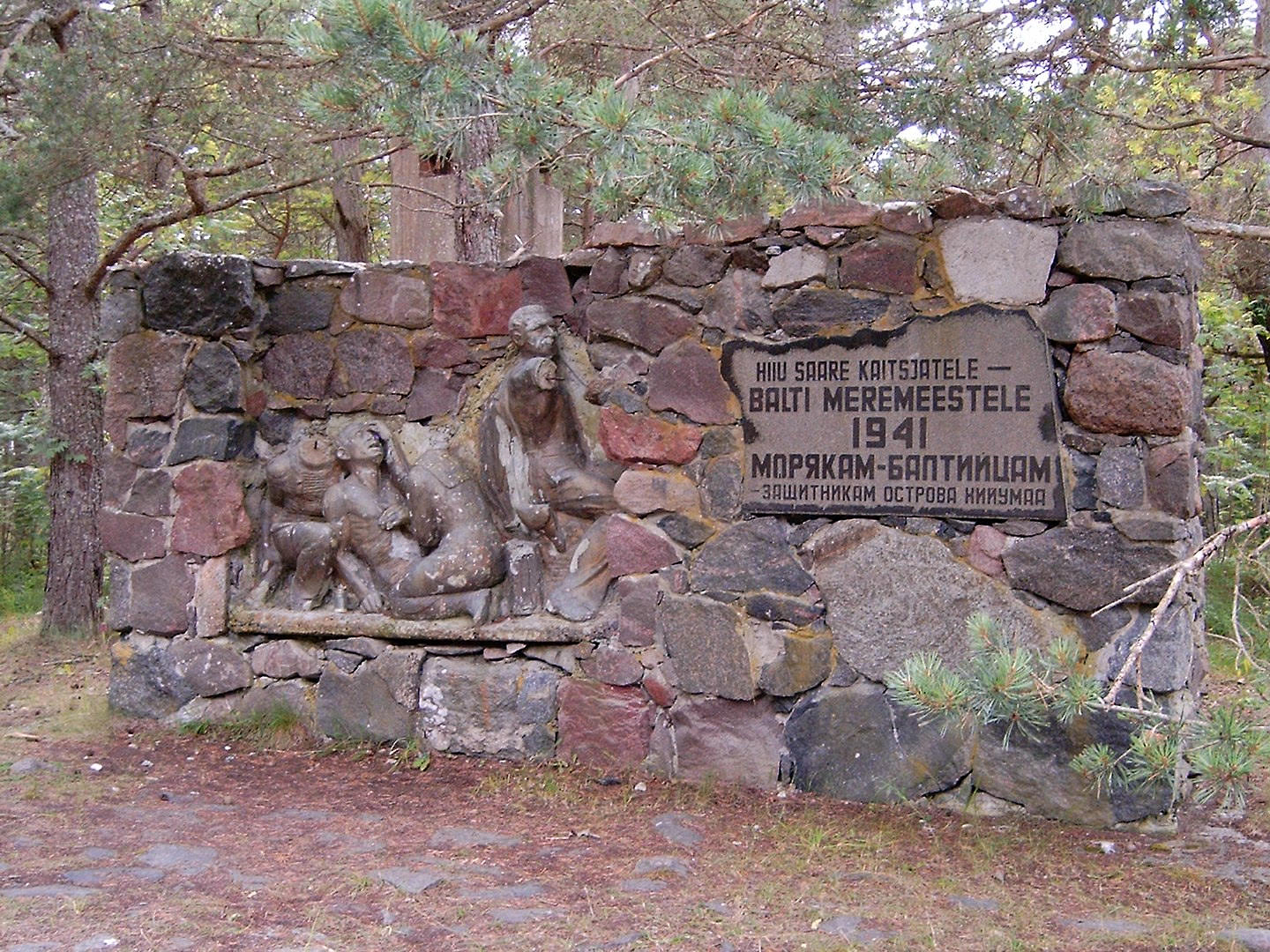Monument Hiiu Saarte Kaitsjatele – Balti Meremeestele (“To the Protectors of Hiiu Islands– the Baltic Seamen”
Year of completion: 1968
Address: Hiiu County, Tahkuna village, former Tahkuna coastal defence battery no. 26
Author Vitali Navožnõhh
Granite, concrete
Not listed as a cultural monument
The monument to the protectors of Hiiu Islands – Baltic seamen who fell in 1941 was erected thanks to the eager initiative of the local stonemason Vitali Navožnõhh himself in 1968. The stonemasonry expert with an artistic education no longer felt challenged by his work after ten years of carving letters and pictures into tombstones, despite being acknowledged in the field and still eager to work. He was already monumentally driven by sculptural ambition before retirement, during which he hoped to focus on the area with more free time. In fact, the stonemason’s initial plan was to dedicate a whole series of monuments, which would sum up to a 6-8-part whole, to the protectors of Hiiumaa. However, the local party committee lacked interest in such a large-scale dedication, and the Tahkuna monument remained the only representative of the series. The monument to the protectors of Hiiumaa is the sculptor’s first artwork of the sort and is definitely worthy of attention for being such an avid inception.
The monument complex with its high-relief left from under the chisel of Navožnõhh as a mature craftsman who intimately knows his everyday work. The sculpture group, poured of fine grained concrete and painted over, consists of four soldiers, and is modelled with an astonishing precision for a person whose specialty does not require such a thorough sense for anatomy or the curving of drapery. One can only imagine that the sculptor’s former job experience as a carpenter, which he was before becoming a stonemason, came in handy during this project.
The lack of proper tools or specific skills can be somewhat perceived upon first impression of the monument, but is compensated for tenfold with its uplifting effect. The concrete high-relief depicting four soldiers has been badly damaged, likely due to the zeal of perestroika after regaining independence. After perestroika, there was a tendency to overly persecute monuments with political undertones because of their history, and the fate of being destroyed has struck other such structures as well.
Enriko Mäsak








